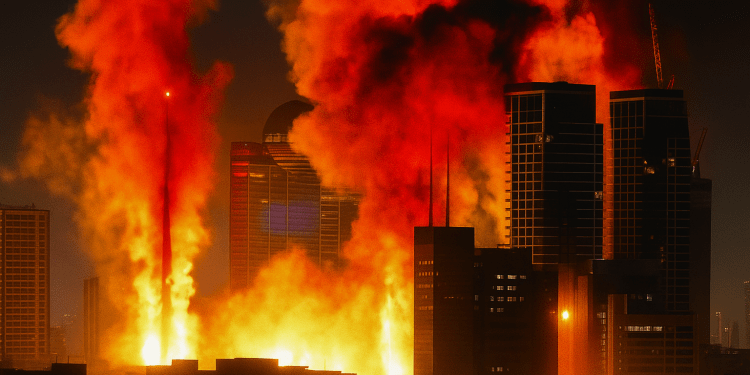Read more at Reuters, Al Jazeera, and BBC World News to follow the unfolding situation.
Introduction
The geopolitical fault lines in the Middle East have once again been violently shaken. Following the recent U.S. airstrikes on Iranian nuclear facilities, the world is holding its breath as Tehran prepares its response. With tensions escalating rapidly, markets, governments, and military alliances are recalculating their strategies in anticipation of what comes next.
1. The U.S. Airstrikes: Strategic Precision or Provocation?
On June 21, 2025, U.S. forces launched a targeted strike on multiple nuclear research and development sites in Iran. According to Pentagon sources, the operation was a “preemptive measure” aimed at halting uranium enrichment believed to be approaching weapons-grade levels.
The strikes destroyed critical infrastructure near Natanz and Arak, with satellite imagery showing massive craters and fires. Washington insists the move was necessary after “multiple ignored warnings,” while Iran labeled it a “blatant act of war.”
2. Iran’s Options: Diplomatic Chess or Military Retaliation?
Iran’s Supreme National Security Council convened an emergency session, vowing a “firm and calculated response.” So far, Tehran has mobilized air defenses, increased cyber warfare readiness, and hinted at the possibility of closing the Strait of Hormuz — a move that could paralyze 20% of global oil trade.
LIVE: Iran foreign minister press conference after US strikes on nuclear sitesOptions on the table include:
- Coordinated drone and missile attacks on U.S. bases in Iraq and Syria
- Proxy warfare escalation via Hezbollah and Houthis
- Cyberattacks on Western critical infrastructure
- Diplomatic pressure via Russia, China, and the BRICS alliance
3. Israel’s Role: A Silent Partner or Strategic Trigger?
While the U.S. officially claims sole responsibility for the strikes, multiple defense analysts point to Israel’s covert intelligence support. Iran has already launched retaliatory rocket fire into the Golan Heights, indicating that Jerusalem may not escape Tehran’s wrath.
4. Global Consequences: Markets, Alliances, and the Risk of a Wider War
The immediate fallout has been global:
- Brent crude prices surged 8% overnight
- Gold hit a six-month high as investors rushed for safe havens
- NATO has moved naval assets to the Gulf region
- China and Russia condemned the U.S. action, calling for a UN emergency session
Meanwhile, Gulf states like Saudi Arabia and the UAE have activated defense protocols, fearing spillover strikes or Iranian-instigated insurgencies.
5. What Comes Next?
The situation is fluid and dangerous. A miscalculated move from either side could spark a regional war involving Israel, Lebanon, Syria, and possibly drawing in Russia and Turkey. The Biden administration is reportedly preparing for further deployments to the region, while Iran’s Revolutionary Guard remains on full alert.
Conclusion
This is not merely a U.S.-Iran skirmish — it is a flashpoint in a broader reshuffling of global power. The coming days will test the strength of diplomatic backchannels and the wisdom of military restraint. But one thing is clear: the Middle East stands on the edge of a cliff, and the world is watching.




